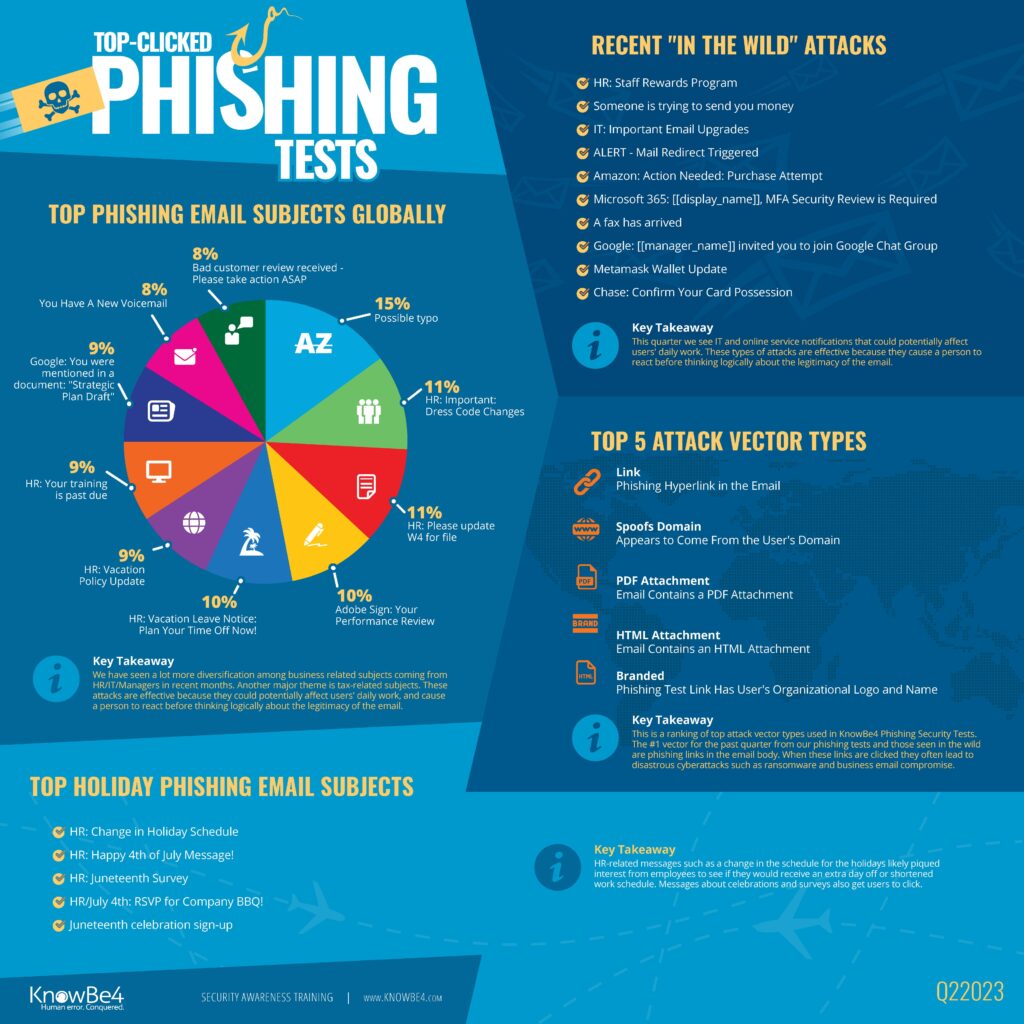The act of Phishing is when scammers lure victims in with some type of bait only to capture their private details in the process. Wire fraud cases can begin with Phishing and the scammer gains access to an email account. They don’t always strike right away, lurking until an opportunity comes along.
Phishing begins when a scammer masquerades as an official service provider, co-worker, bank, or friend, and solicits your login credentials. They may use an email or call to pique your interest, urging you to click on a link, open an attachment, or resolve an issue. Before you can react, they’ll prompt you to enter your login details on a counterfeit page that can be deceptively official or use a URL that closely resembles the genuine entity. Vigilance and awareness are key to thwarting these attempts.
HR-Related Subjects Represent Half of the Malicious Emails Clicked
Studies and polls have revealed the prevalence of HR-related email subjects in phishing attempts, such as vacation policy notifications, dress code changes, and past-due training alerts. These seemingly innocuous topics can significantly impact end users’ daily work. For a comprehensive list of the top phishing email subject lines to watch out for this summer, refer to the KnowB4 infographic below!


